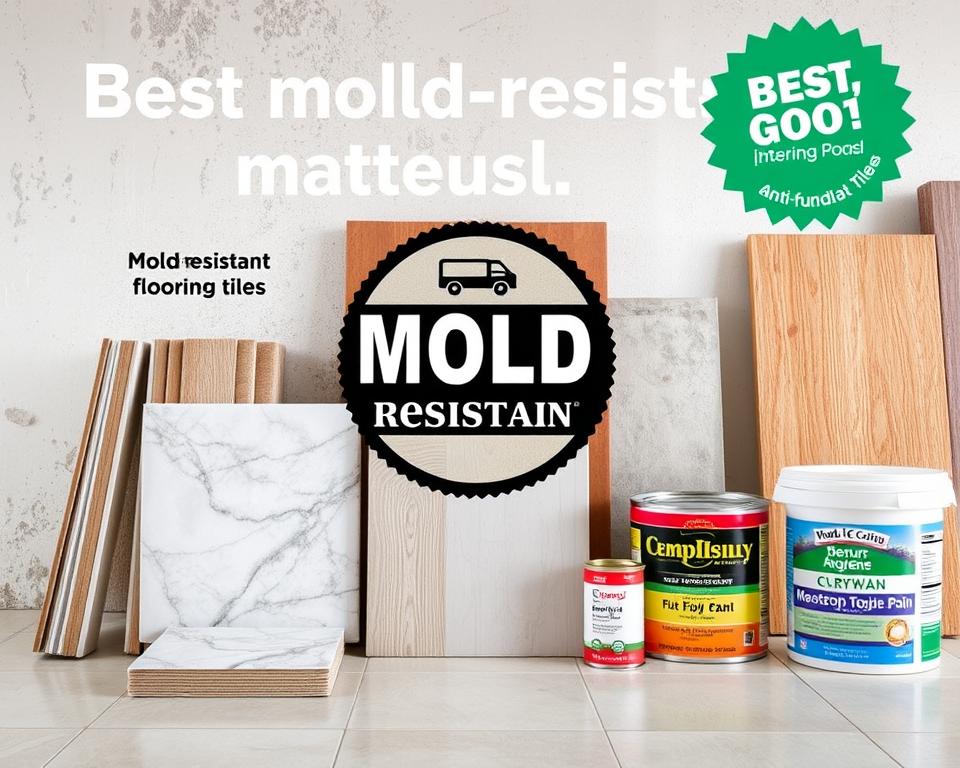Did you know mold spores exist in nearly every room of American homes? These microscopic particles multiply rapidly, with colonies forming in as little as 24–48 hours when moisture is present. Unlike pests you can spot easily, mold works invisibly – eating away at walls, triggering allergies, and costing homeowners $3–$5 billion annually in remediation efforts.
Damp areas like bathrooms and basements become breeding grounds for this stubborn fungus. When airborne spores settle on porous surfaces, they feed on organic matter in wood, drywall, and even dust. The result? Musty odors, discolored walls, and long-term risks to both your property and family’s well-being.
Choosing the right building components during construction or renovation stops problems before they start. Modern options like cement board, moisture-resistant drywall, and antimicrobial paints create barriers against fungal growth. Pair these with proper ventilation, and you’ll slash repair costs while safeguarding respiratory health.
Key Takeaways
- Mold spreads through airborne spores and thrives in humid areas
- Exposure can trigger asthma attacks and allergic reactions
- Structural damage often requires expensive professional removal
- Preventive measures during renovations save money long-term
- Proper material selection blocks growth at the source
Introduction to Mold-Resistant Materials
Mold doesn’t just damage walls; it silently threatens your family’s health. Protective building components act like invisible shields, stopping fungal growth before it begins. These solutions combine smart design with modern science to create inhospitable environments for spores.
Defining Mold Resistance and Its Importance
True protection comes from three key features: moisture control, antimicrobial additives, and smooth surfaces. Unlike regular options, these products either repel water or contain fungus-fighting chemicals. Non-porous surfaces leave nothing for spores to feed on.
| Material Type | Key Features | Effectiveness |
|---|---|---|
| Cement Board | Waterproof core | Blocks 95% moisture |
| Moisture-Guard Drywall | Fiberglass facing | Resists absorption |
| Antimicrobial Paints | Microbe inhibitors | Prevents surface growth |
Why a Mold-Free Home Matters for Health and Safety
Breathing mold particles causes more than sneezing fits. Long-term exposure leads to chronic coughs, asthma flare-ups, and weakened immunity. Children and seniors face higher risks due to developing or aging respiratory systems.
Improved indoor air quality means fewer doctor visits and better sleep. Homes using protective components show 42% fewer allergy symptoms according to recent studies. This proactive approach safeguards both physical health and property value.
Understanding Mold Growth and Its Impact on Homes
Hidden water issues often fuel destructive mold colonies before homeowners notice warning signs. These organisms need just three elements to thrive: organic material, oxygen, and persistent dampness. Modern homes unintentionally provide all three through everyday activities and structural vulnerabilities.
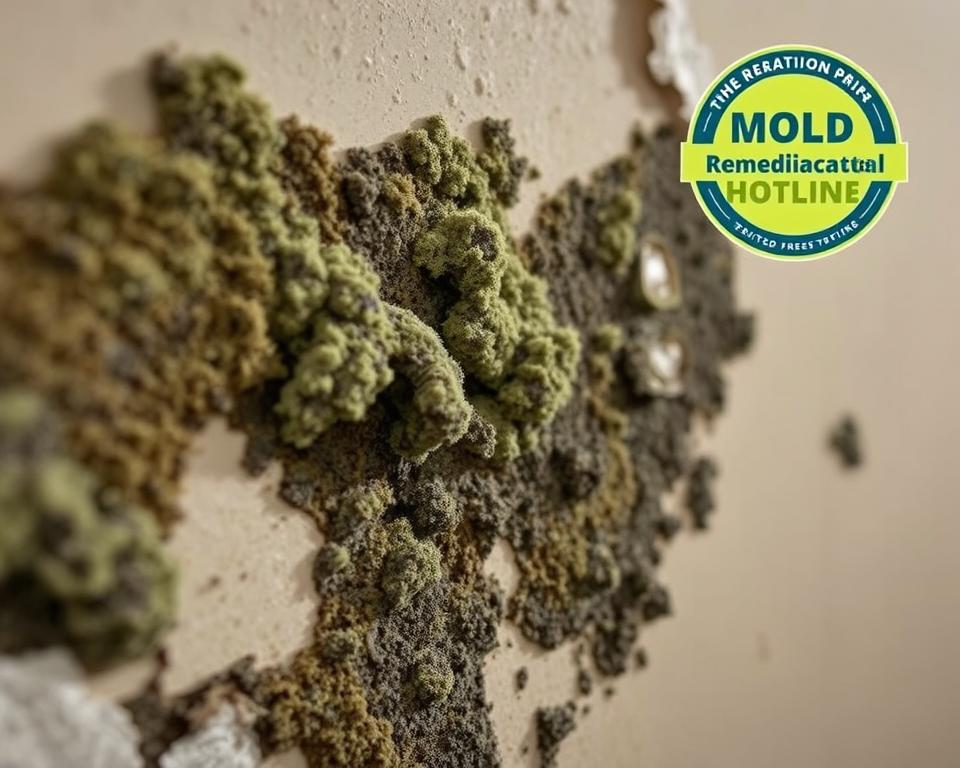
Common Causes of Mold Growth
Leaky pipes and roof damage create perfect moisture hotspots. Bathrooms and basements frequently suffer from condensation buildup, especially when ventilation systems underperform. Humidity levels above 50% accelerate spore reproduction – a problem in regions with heavy rainfall or poor airflow.
Flooding incidents demand immediate action. Standing water allows colonies to form in under two days. Even minor drips from appliances can trigger outbreaks if left unaddressed for weeks.
Health and Structural Risks Associated With Mold
Prolonged exposure often leads to chronic respiratory issues and allergy flare-ups. Stachybotrys chartarum (black mold) produces toxins linked to neurological problems in extreme cases. Children and asthma patients face heightened vulnerability.
Structurally, mold eats through wood studs and drywall like termites. Insulation loses its thermal resistance when contaminated, raising energy bills. Severe infestations sometimes require complete wall replacements – a cost averaging $15,000 nationwide.
Factors to Consider When Selecting Mold-Resistant Materials
Choosing the right components for your home’s defense against fungal growth requires careful evaluation. Three critical aspects determine long-term success: performance under wet conditions, verified quality standards, and smart budgeting.
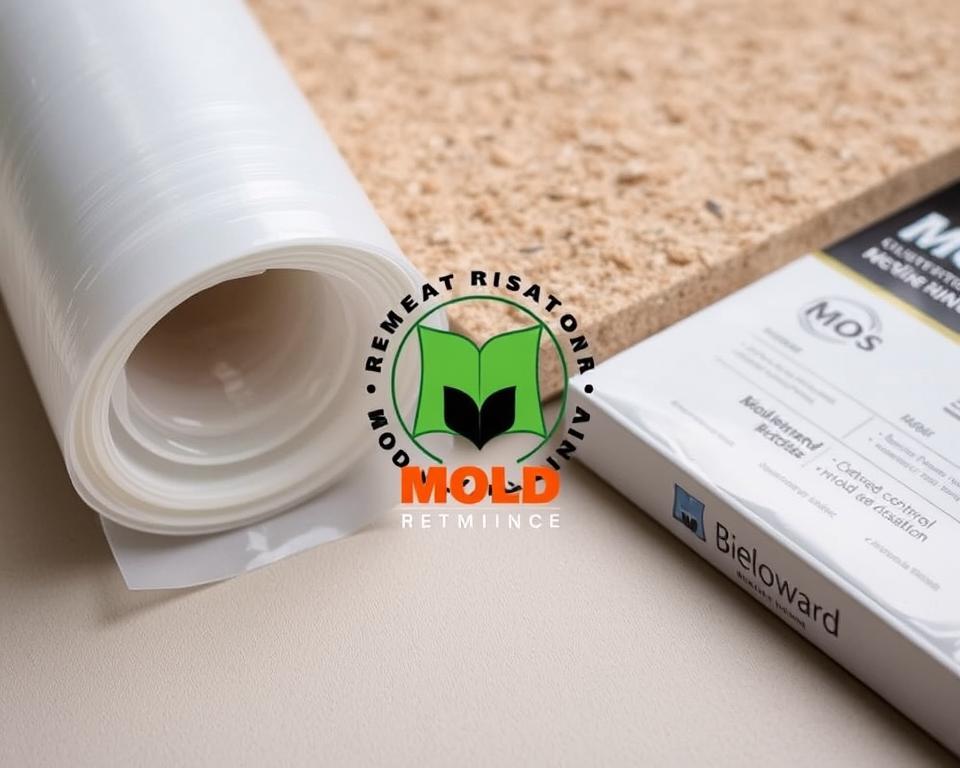
Moisture Control and Durability
Water resistance separates effective solutions from temporary fixes. Compare absorption rates – cement board absorbs 5% moisture versus 30% in standard drywall. Permeability ratings below 1.0 perm indicate better vapor blockage.
| Material | Water Absorption | Permeability | Certifications |
|---|---|---|---|
| Fiberglass Panels | 0.8% | 0.6 perm | ASTM D3273 |
| Moisture-Guard Drywall | 2.1% | 1.2 perm | GREENGUARD Gold |
| PVC Trim | 0% | 0.3 perm | UL GREENGUARD |
Durability matters as much as initial protection. Impact-resistant surfaces maintain their protective layers longer. Check warranty periods – quality products offer 10+ years coverage against moisture damage.
Certification, Cost, and Manufacturer Reputation
Look for third-party validation through GREENGUARD Gold or ASTM standards. These certifications confirm low VOC emissions and fungal resistance. Reputable brands invest in antimicrobial research – their technical bulletins often detail lab test results.
While specialized building materials cost 15-30% more upfront, they prevent $5,000+ remediation bills later. Balance initial investments with projected savings from avoided repairs and health-related expenses.
Best mold-resistant materials for homes
Smart material choices form the first line of defense against unwanted biological growth. Modern innovations combine specialized coatings and structural designs to eliminate conditions where spores thrive.
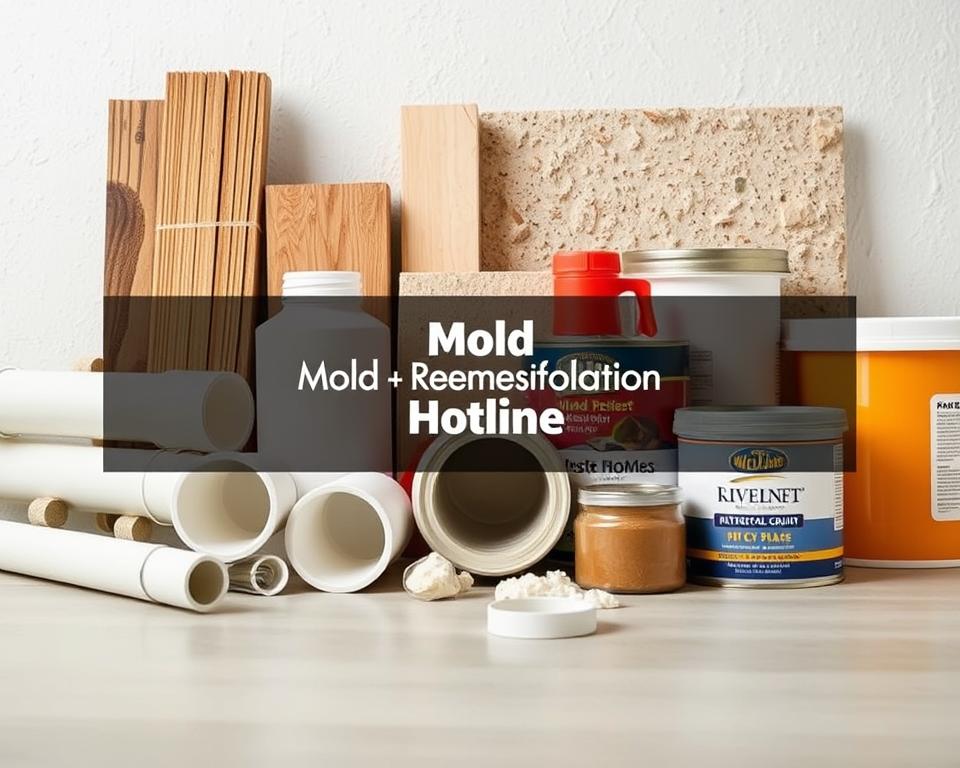
Mold-Resistant Drywall, PVC Panels, and Insulation
Fiberglass-faced drywall outperforms traditional options with wax-treated gypsum cores. These panels absorb 70% less moisture, starving spores of the dampness they need. Brands like Georgia-Pacific’s DensArmor Plus use glass mats instead of paper facing – removing cellulose that fungi feed on.
PVC wall systems like Trusscore Wall&CeilingBoard create seamless barriers. Their antimicrobial surfaces repel water completely, making them ideal for laundry rooms and basements. Closed-cell spray foam insulation fills gaps while resisting humidity better than fiberglass batts.
Innovative Paints, Sealants, and Caulking Options
Premium acrylic paints now include microscopic fungicides that disrupt spore reproduction. Sherwin-Williams’ Paint Shield® kills 99.9% of bacteria within two hours of contact. Silicone-based caulks with built-in inhibitors maintain flexible seals around tubs and windows.
Advanced sealants prevent water intrusion at vulnerable joints. Products like DAP Dynaflex Ultra with Microban® protect edges where walls meet countertops. These solutions work together to create hostile environments for fungal colonies.
Comparing Building Materials for Mold Resistance
Building material choices directly impact a home’s battle against fungal invaders. Structural components either invite or repel microbial growth based on their composition and maintenance. Let’s examine how common options perform under moisture challenges.
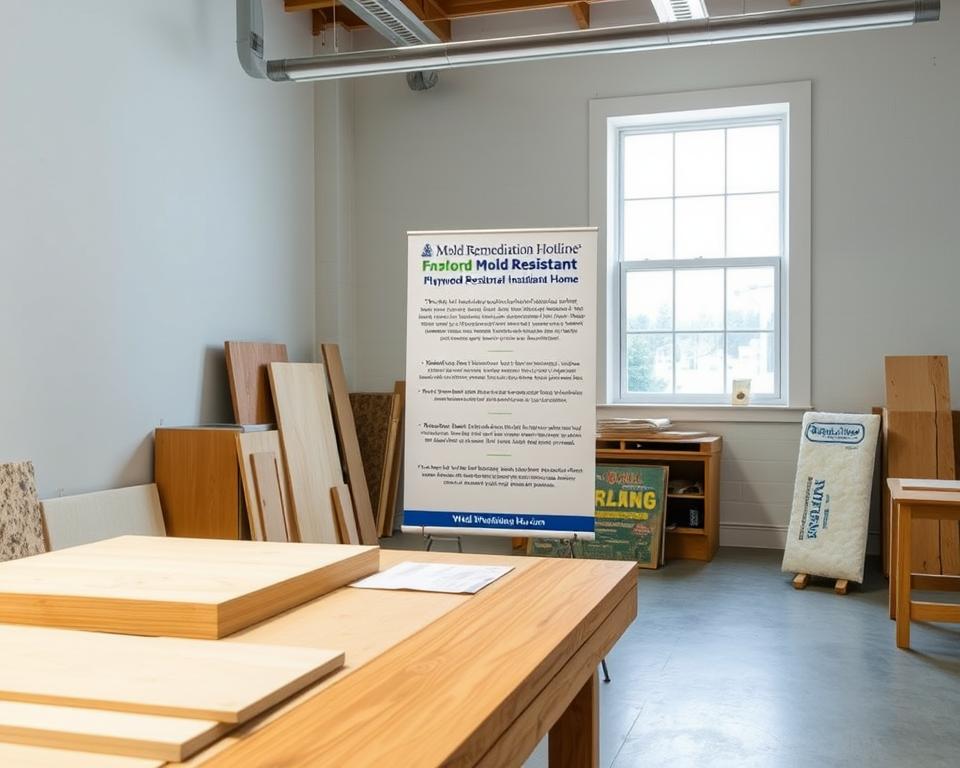
Concrete, Brick, and Stone: Inorganic Defenders
These dense substances naturally resist decay because they lack organic matter. Concrete blocks 90% of water penetration when properly sealed. However, surface cracks can trap dirt and pollen – unexpected food sources for mold when moisture lingers.
Brick walls require careful joint maintenance. Mortar gaps absorb water like sponges if not treated with waterproof sealants. Stone foundations show similar vulnerabilities at cement connections, needing annual drainage checks.
Wood, Drywall, and Fiberglass: Vulnerabilities and Protections
Wood’s cellular structure acts like a moisture magnet. A single plumbing leak can turn studs into fungal buffets within 72 hours. Pressure-treated lumber reduces risks but can’t eliminate them completely.
| Material | Mold Resistance Level | Key Vulnerabilities | Maintenance Tips |
|---|---|---|---|
| Concrete | High | Surface debris accumulation | Power wash quarterly |
| Wood | Low | End grain absorption | Apply borate coatings |
| Drywall | Very Low | Paper facing | Use fiberglass panels |
| Fiberglass | Moderate | Adjacent organic materials | Install vapor barriers |
Standard drywall fails spectacularly in wet areas – its paper backing becomes mold’s favorite snack. Upgrade to paperless versions with fiber-reinforced cores for bathrooms. Fiberglass insulation resists decay but requires perfect sealing to prevent moisture traps near wooden beams.
Innovative Solutions for Mold Prevention
Modern homes now deploy smart technologies that actively combat fungal threats before they take root. These systems work like 24/7 guardians, monitoring air composition and moisture levels to maintain healthy living spaces.
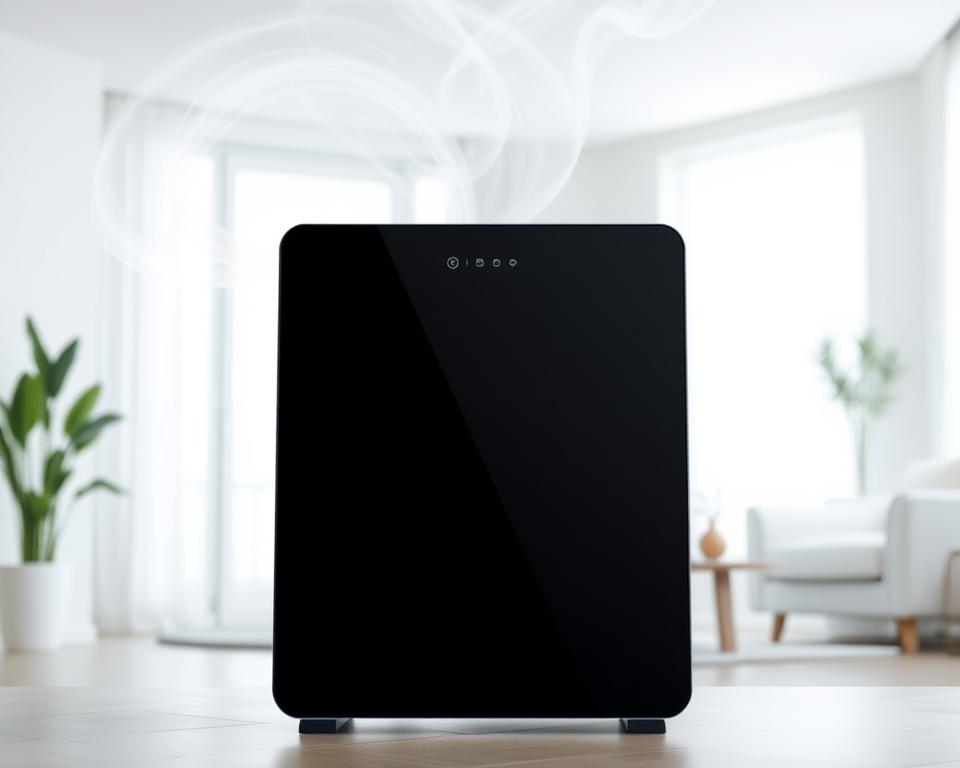
Advanced Air Purifiers and Filtration Systems
High-efficiency particulate air (HEPA) filters capture 99.97% of mold spores as small as 0.3 microns. Premium models like Air Oasis iAdaptAir® use five-stage purification:
| Technology | Function | Effectiveness |
|---|---|---|
| H13 HEPA | Traps spores | 99.97% @ 0.3µm |
| UV-C Light | Destroys DNA | 98% bacteria |
| Bipolar Ions | Neutralize odors | 85% VOC reduction |
During renovations, these units create cleanroom-like conditions by cycling air 5× per hour. Built-in carbon filters simultaneously remove musty odors from damp areas.
Smart Ventilation and Moisture Sensors
Wi-Fi enabled detectors track humidity in real time, sending alerts when levels exceed 55%. Integrated systems automatically activate exhaust fans or dehumidifiers to correct imbalances within minutes.
Whole-house solutions like AprilAire 8476 link ventilation rates to indoor air quality readings. Bathroom fans with motion sensors run until moisture drops below risk thresholds, preventing stagnant environment where spores thrive.
Practical Construction and Renovation Strategies
Building a home that resists fungal issues starts with smart practices during the construction phase. Focus on creating physical barriers against moisture while ensuring air moves freely through critical spaces.
Foundation First: Drainage and Barriers
Slope the ground six inches downward over ten feet around your foundation. This simple step redirects thousands of gallons of water annually. Use poured concrete or sealed masonry blocks below grade – their dense structure blocks 90% of moisture intrusion compared to porous alternatives.
Install vents in kitchens, bathrooms, and attics to maintain airflow. Exhaust fans should move at least 50 cubic feet per minute (CFM) in wet areas. Pair these with dehumidifiers in basements to keep humidity under 45% – the threshold where spores struggle to multiply.
Leak Response Protocol
Fix plumbing issues within 24 hours during renovations. Standing water behind walls creates invisible breeding grounds. Use moisture meters to check hidden spaces before closing up surfaces – even 17% dampness can fuel growth.
Choose closed-cell spray foam around pipes and windows. This material expands to seal gaps while resisting humidity better than traditional options. Regular inspections of roofing flashings and exterior caulking prevent slow leaks that cause major water damage over time.
